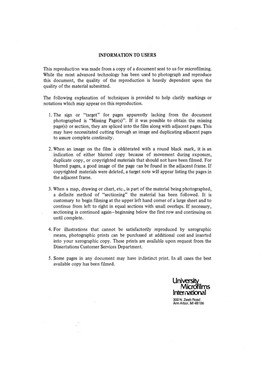| dc.contributor.author | Brady, Karen S. | en_US |
| dc.date.accessioned | 2013-08-16T12:28:51Z | |
| dc.date.available | 2013-08-16T12:28:51Z | |
| dc.date.issued | 1983 | en_US |
| dc.identifier.uri | https://hdl.handle.net/11244/5095 | |
| dc.description.abstract | Monomeric species of dissolved iron in acid mine drainage and the waters of receiving streams were also examined. The dominant iron species in acid mine drainage was Fe(II). In areas of the receiving stream where precipitation occurred, FE(III) species dominated. Based on the presence of various Fe(III) species detected by UV-spectroscopy, two distinctly separate pathways for precipitation of Fe-oxide were suggested. In the stream, polymer growth resulted in ferrihydrite. In contrast, contact (direct) precipitation of goethite appeared to occur from mine discharge waters in contact with soil surfaces. | en_US |
| dc.description.abstract | The yellow precipitate was isolated, identified as poorly-ordered ferrihydrite, and compared to synthetic ferrihydrites that were hydrolyzed and precipitated in the presence of graded levels of SO(, 4). Based on increased rates of precipitation with increases in sulfate at the time of hydrolysis, it was determined that sulfate served to neutralize positive surface charge and to increase aggregate stability. The sulfate also suppressed structural ordering and altered the morphology, surface area, and color of the synthetic ferrihydrites. The laboratory synthate most similar in color and other properties to the nature stream precipitate was that formed in the presence of 0.1 to 0.15% sulfate. | en_US |
| dc.description.abstract | Despite geologic, gemorphic, and land use differences within the Muskingum River Basin, suspended sediments collected from the Muskingum River and its tributaries during spring flooding were found to be remarkably uniform in mineralogy and size distribution. The most significant evidence of regional differences within the basin came from Moxahala Creek, which is heavily influenced by acid drainage from abandoned coal mines. As a result, Black Fork Creek, a tributary to Moxahala Creek, was chosen for detailed water quality and bottom sediment studies. Marked increases in dissolved SO(, 4), Fe, and Al, together with an associated decrease in pH were observed in sections of the stream affected by acid mine drainage. In addition, a gelatinous yellow precipitate of iron was abundant in the bottom sediments below sources of pollution. This Fe-oxide or oxyhydroxide precipitate greatly increased the surface area and reactivity of the bottom sediments and added to the overall sediment load. | en_US |
| dc.format.extent | 198 p. | en_US |
| dc.publisher | The University of Oklahoma. | en_US |
| dc.subject | Geology. | en_US |
| dc.title | IRON PRECIPITATES FROM ACID COAL MINE DRAINAGE IN SOUTHEASTERN OHIO: ORIGIN, OCCURRENCE AND REGIONAL SIGNIFICANCE. | en_US |
| dc.type | Thesis | en_US |
| dc.thesis.degree | Ph.D. | en_US |
| dc.note | Source: Dissertation Abstracts International, Volume: 44-01, Section: B, page: 0084. | en_US |
| ou.identifier | (UMI)AAI8311729 | en_US |
| ou.group | Other | |
